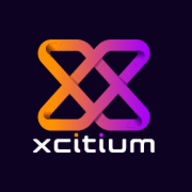

Symantec Endpoint Security and Comodo Advanced Endpoint Protection are two leading solutions in endpoint security. Comodo stands out for its features, making it worth the investment, while Symantec excels in support and pricing.
Features: Symantec Endpoint Security provides advanced threat protection, real-time updates, and robust security measures. Comodo Advanced Endpoint Protection offers auto-containment, a default-deny platform, and highly effective comprehensive features.
Room for Improvement: Symantec Endpoint Security users want better reporting functionalities and enhanced threat detection. Comodo Advanced Endpoint Protection users desire a smoother integration process and faster response times, along with improvements in the overall user interface.
Ease of Deployment and Customer Service: Symantec Endpoint Security is noted for its straightforward setup process but criticized for slow customer service response times. Comodo Advanced Endpoint Protection, although slightly more complex to deploy, receives positive feedback for its responsive and helpful customer service.
Pricing and ROI: Symantec Endpoint Security offers competitive pricing with satisfactory ROI, but Comodo Advanced Endpoint Protection justifies its higher cost through extensive features and long-term benefits, leading to a better overall ROI.
Without this type of solution, work becomes hampered and files become inaccessible.
Symantec Endpoint Security filled gaps in our toolset, particularly with the ability to control network firewall on hosts remotely, which was greatly appreciated.
Customer support is generally satisfactory but could be improved, especially in terms of response time.
In some cases, it rates as high as ten out of ten, while in others, it can be as low as eight.
There is no support in the German language, which is a problem for many public tenders.
Symantec Endpoint Security is quite scalable, and it is very important for large clients.
The scalability of the servers is good, as it requires computational powers.
When deploying on old PCs, servers, or laptops, optimal performance cannot be expected.
The stability of Comodo Advanced Endpoint Protection is rated at ninety-five to ninety-seven percent.
Previously, we used to have multiple servers such as GUP servers and numerous servers for pushing updates, but we reduced it and transitioned almost 30,000 devices to CrowdStrike, which was easy to manage.
I have encountered issues where I had to uninstall and reinstall the product on end users' computers to view the logs again.
Comodo Advanced Endpoint Protection could improve by extending its auto containment feature to Mac and Linux systems since it currently only supports Windows.
The main areas for improvement are support responsiveness and the additional enhancement with the DLP integration.
I would like to see improvements in the scanning part of the solution, specifically to enhance the CPU and hard disk usage during scanning and updates to prevent disruption during work hours.
We wanted to add multiple hashes because of numerous new alerts coming, but we could only add them one by one, which is a considerable disadvantage in Symantec.
It is cumbersome to use, particularly in handling firewall management.
Pricing is competitive and considered average compared to other solutions.
It seems to be half the cost or more affordable than other solutions.
Symantec Endpoint Protection and Symantec Endpoint Security Enterprise are quite affordable, with Symantec Endpoint Security Complete costing about four times the Endpoint Protection price, still comparable to other EDR products.
The pricing is very low compared to other companies like SentinelOne and others.
If anything happens or any suspicious activities are detected, an alert is generated, allowing for quick response.
It includes an auto containment feature, ensuring files and folders remain secure.
A valuable feature of Symantec Endpoint Security is the ability to remotely isolate a computer from the network if it's compromised, either physically or digitally.
What I appreciate most about Symantec Endpoint Security is that it's easy to manage compared to other tools I have worked with, such as minimal endpoint security, McAfee, and CrowdStrike.
One important feature is the EDR function, necessary for many public customers due to upcoming laws in Germany, which is available through Symantec Endpoint Security Complete.
| Product | Market Share (%) |
|---|---|
| Symantec Endpoint Security | 3.6% |
| Comodo Advanced Endpoint Protection | 0.4% |
| Other | 96.0% |


| Company Size | Count |
|---|---|
| Small Business | 15 |
| Midsize Enterprise | 1 |
| Large Enterprise | 1 |
| Company Size | Count |
|---|---|
| Small Business | 69 |
| Midsize Enterprise | 32 |
| Large Enterprise | 62 |
Comodo Advanced Endpoint Protection (AEP) delivers patent-pending auto-containment, where unknown executables and other files that request runtime privileges are automatically run in a virtual contain that does not have access to the host system's resources or user data.
Symantec Endpoint Security is a robust and reliable product that provides complete protection against viruses, malware, Trojans, and malicious files. It offers application and device control, ease of use in deploying and updating, a central control console, stability, scalability, auto-discovery capabilities, patch management, endpoint detection and response capabilities, intrusion detection module.
The Symantec Global Intelligence Network (GIN) provides threat intelligence and detection across endpoints, email, and web traffic. It has helped organizations reduce downtime, increase productivity, and improve security posture. Symantec Endpoint Security is easy to use, has a flexible administration, and offers more value than expected.
We monitor all Endpoint Protection Platform (EPP) reviews to prevent fraudulent reviews and keep review quality high. We do not post reviews by company employees or direct competitors. We validate each review for authenticity via cross-reference with LinkedIn, and personal follow-up with the reviewer when necessary.